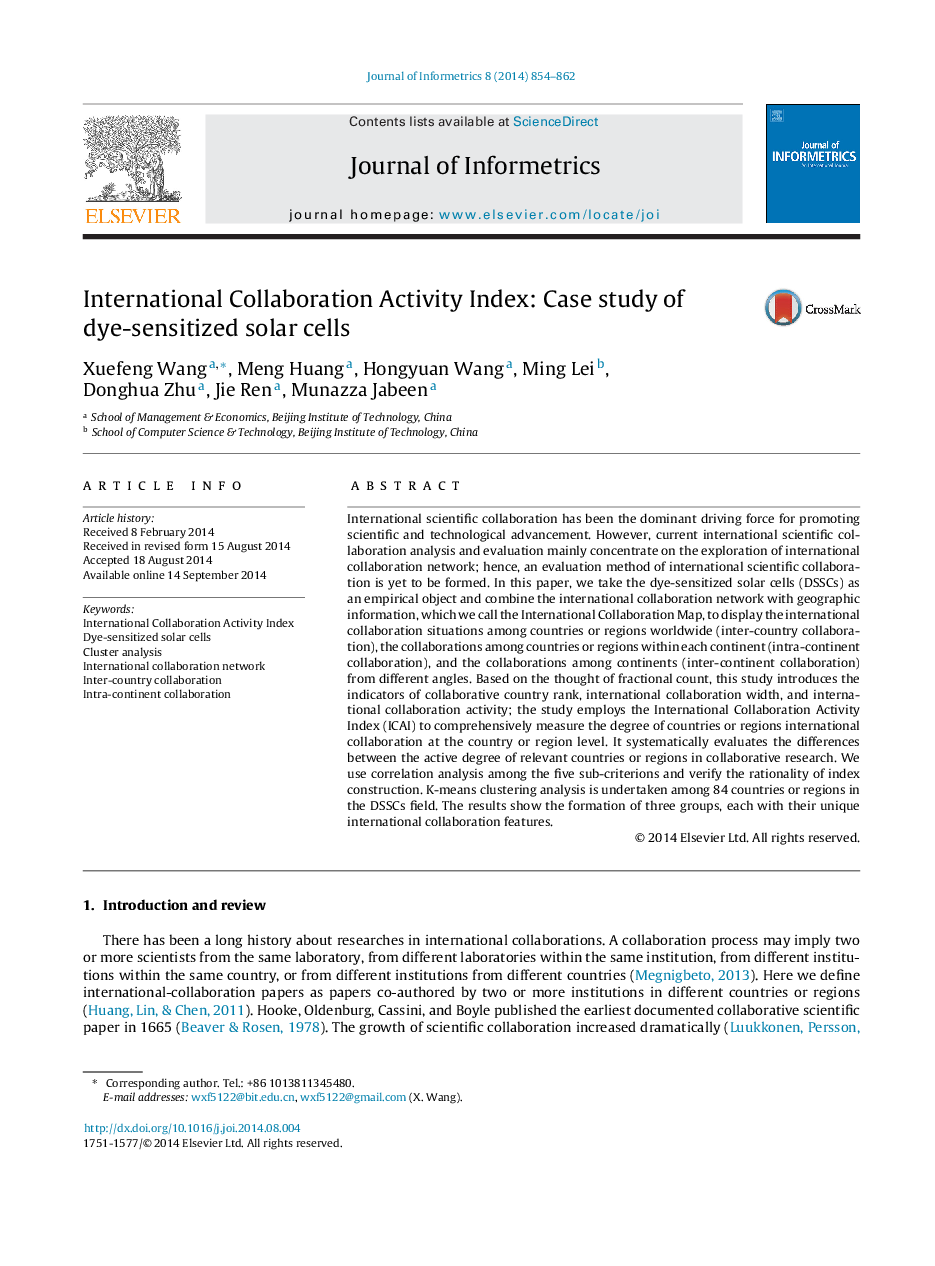| Article ID | Journal | Published Year | Pages | File Type |
|---|---|---|---|---|
| 523385 | Journal of Informetrics | 2014 | 9 Pages |
•We develop the index of ICAI to comprehensively measure the international collaboration active degree.•We take the dye-sensitized solar cells (DSSCs) as an empirical object.•An International Collaboration Map is formed by displaying the international collaboration network geographically.•Three groups, each with unique collaboration features, are formed among the 84 countries or regions.
International scientific collaboration has been the dominant driving force for promoting scientific and technological advancement. However, current international scientific collaboration analysis and evaluation mainly concentrate on the exploration of international collaboration network; hence, an evaluation method of international scientific collaboration is yet to be formed. In this paper, we take the dye-sensitized solar cells (DSSCs) as an empirical object and combine the international collaboration network with geographic information, which we call the International Collaboration Map, to display the international collaboration situations among countries or regions worldwide (inter-country collaboration), the collaborations among countries or regions within each continent (intra-continent collaboration), and the collaborations among continents (inter-continent collaboration) from different angles. Based on the thought of fractional count, this study introduces the indicators of collaborative country rank, international collaboration width, and international collaboration activity; the study employs the International Collaboration Activity Index (ICAI) to comprehensively measure the degree of countries or regions international collaboration at the country or region level. It systematically evaluates the differences between the active degree of relevant countries or regions in collaborative research. We use correlation analysis among the five sub-criterions and verify the rationality of index construction. K-means clustering analysis is undertaken among 84 countries or regions in the DSSCs field. The results show the formation of three groups, each with their unique international collaboration features.
